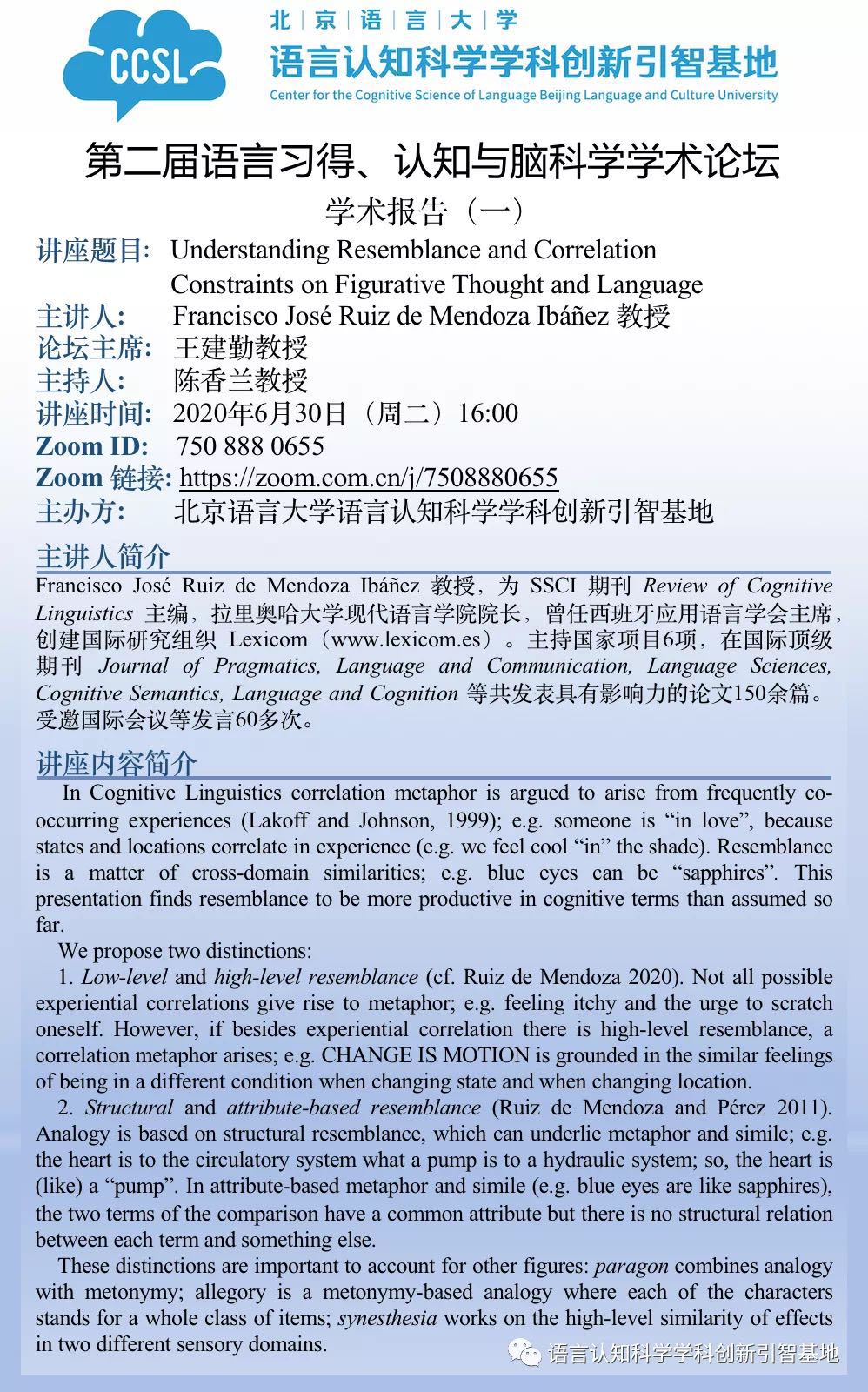
Understanding resemblance andcorrelation constraints on figurative thought and language
主讲人:
Francisco José Ruiz de Mendoza Ibáñez教授(拉里奥哈大学现代语言学系)
论坛主席:
王建勤教授
主持人:
陈香兰教授
讲座时间:
2020年6月30日(周二)16:00
ZOOM ID:
750 888 0655
主办方:
北京语言大学语言认知科学学科创新引智基地
主讲人简介:
Francisco José Ruiz de Mendoza Ibáñez教授,为SSCI期刊Review of Cognitive Linguistics主编,拉里奥哈大学现代语言学院院长,曾任西班牙应用语言学会主席,创建国际研究组织Lexicom(www.lexicom.es)。主持国家项目6项,在国际顶级期刊Journal of Pragmatics, Language and Communication, Language Sciences, Cognitive Semantics, Language and Cognition等共发表具有影响力的论文150余篇。受邀国际会议等发言60多次。
讲座内容简介:
Cognitive Linguistics makes a distinction between correlation and resemblance metaphor (Grady 1999). Correlation metaphor based on experiential correlation, that is, on frequently co-occurring experiences that our brains tend to mix up since activating one naturally brings the other into the same experiential scenario (Lakoff and Johnson 1980, 1999). This is reflected in language. Thus, we say someone is “in love”, where love is a state, because, in our minds, states and locations correlate (e.g. we feel warm “in” bed and cool “in” the shade). On the other hand, resemblance is a matter of cross-domain similarities; e.g. Her eyes are sapphires focuses on the shared light blue color of the eyes and the precious stone.
This presentation explores resemblance relations in various kinds of figurative uses language (cf. Ruiz de Mendoza 2020). In so doing, we find that resemblance is highly productive in cognitive terms. The following points are made:
1. It is necessary to distinguish low-level resemblance from high-level resemblance. This is important since high-level resemblance underlies correlation metaphor. Not all possible experiential correlations give rise to metaphor (e.g. the correlation between feeling itchy and the urge to scratch oneself gives rise to no metaphor).
2. It is necessary to distinguish structural resemblance from attribute-based resemblance (Ruiz de Mendoza and Pérez 2011). This distinction is important to separate metaphor and simile from analogy.
3. The previous distinctions are important to account for other figures of speech. Paragon is thus a case of analogy combined with metonymy.